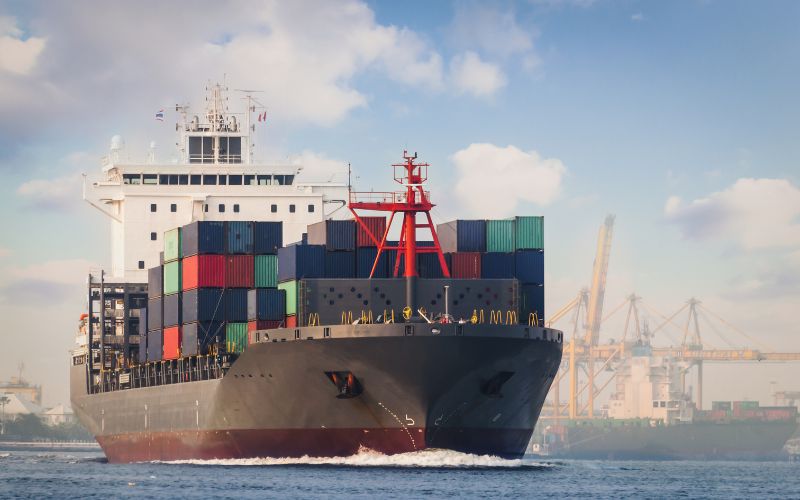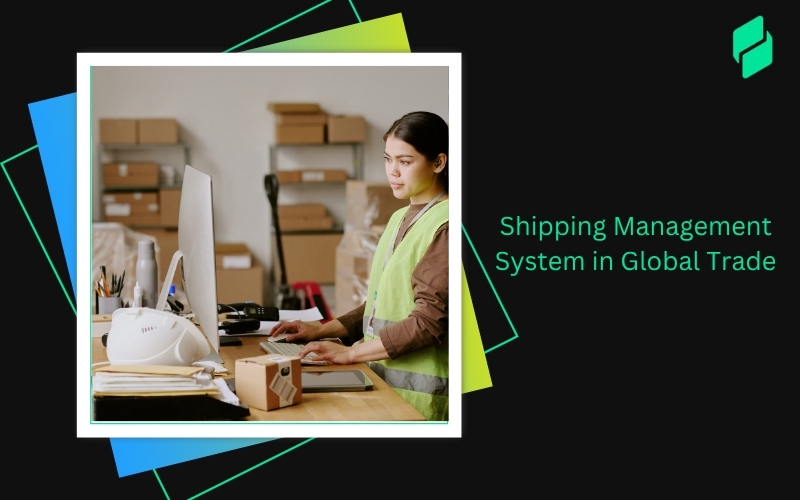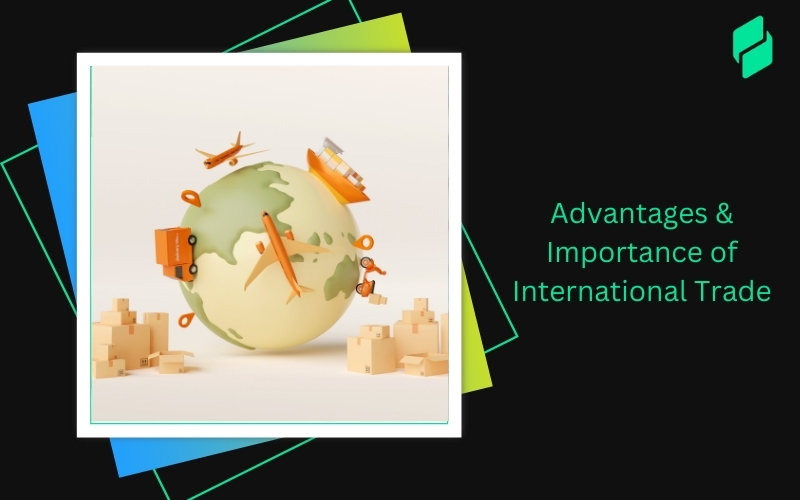Optimize your business: use unlimited savings with Pazago fulfilled now!
Get Started ->Many tracking pages lack clear updates. Initially, the package status shows "out for delivery," but then there are no updates for hours or even a day. Finally, the status updates to "delivered," relieving customer anxiety.
It can be really frustrating and stressful for Indian SMEs and their customers when delivery updates are unclear or delayed, especially since timely information is crucial for managing expectations and operations.
According to reports, 98% of consumers indicate that they want updates at every stage of the delivery process. For e-commerce merchants, the last mile isn’t just a logistics checkpoint; it’s where customer satisfaction is either sealed or shattered, making it the most expensive and complex stage in the delivery process.
Let’s break down what last-mile carrier tracking actually means, why it matters more than you think, and how to stay in control when the package is almost home.
TL;DR
- Last-mile carrier tracking provides real-time visibility from the distribution hub to the customer’s doorstep, a critical phase that shapes customer satisfaction and operational costs.
- Tracking improves efficiency and cuts failures by enabling route optimization, early issue detection, and better coordination between carriers, dispatchers, and customers.
- Choosing the right tracking solution means prioritizing carrier integrations, branded tracking pages, automated notifications, and actionable delivery analytics to scale effectively.
What is Last Mile Carrier Tracking?
Last mile carrier tracking refers to the ability to monitor and manage the final stage of a product’s journey, from the distribution hub to the customer’s doorstep. It provides real-time visibility into the location and status of a package as it moves through the most critical and customer-facing part of the delivery process.
In e-commerce and logistics, the “last mile” is often the most expensive, time-consuming, and complex part of the supply chain. It involves coordination with last-mile carriers, which are specialized delivery providers responsible for local or regional shipments and the final handoff to the customer. These carriers can include national postal services, third-party logistics (3PL) providers, and gig-economy couriers.
What is Last Mile Tracking Number?
A last mile tracking number is a unique identifier assigned to a package or shipment during the final stage of the delivery process, often referred to as the last mile. This last mile is the journey of a parcel from the local distribution center or carrier hub directly to the customer’s doorstep.
The tracking number allows both the sender and the recipient to monitor the real-time progress of the delivery as it moves through this critical phase. It provides detailed updates such as when the package has left the sorting facility, is out for delivery, or has been successfully delivered.
In many cases, this tracking number is tied to a carrier’s tracking system or integrated within a third-party logistics platform. This enables smooth communication between shippers, carriers, and end customers throughout the final leg of the delivery journey.
Now, let us discuss the importance of last mile carrier tracking in business in detail below.
Also Read: How to Implement Inventory Tracking: Steps and Methods
Importance of Last Mile Carrier Tracking
The last mile, the final leg from the transportation hub to the customer’s doorstep, is not just the most expensive and complex stage of delivery but also where customer satisfaction is made or broken. That’s why last mile carrier tracking has become a critical part of modern delivery operations.
Here’s why tracking matters:
- Enhances Customer Experience
Consumers expect visibility. Real-time delivery last mile tracking helps reduce uncertainty and builds trust. When customers can see where their package is and when it will arrive, satisfaction increases and support tickets drop.
A 2024 Bettermile report found that 70% of customers expect real-time last mile tracking on every parcel.
- Reduces Delivery Failures
Missed deliveries cost time and money. With accurate tracking, customers can plan to receive the package or reschedule easily. Carriers can also use location data to optimize rerouting and reduce failed drop-offs.
- Improves Operational Efficiency
For last-mile carriers, tracking tools provide actionable insights. Delivery delays, idle time, and route inefficiencies can be flagged in real time. Dispatchers can intervene early to resolve issues before they affect SLAs.
- Supports Transparency Across Teams
From customer support to warehouse staff, everyone benefits from shared visibility into last mile performance. When a delivery stalls, teams can respond proactively instead of reacting to complaints.
- Improves Data-Driven Decision Making
Over time, last mile carrier tracking generates a large volume of delivery data. Businesses can use this to identify bottlenecks, improve routing algorithms, and renegotiate terms with underperforming carriers.
- Strengthens Brand Reputation
Brands that offer smooth delivery last mile tracking stand out. Reliable tracking signals professionalism and gives customers confidence that their orders will arrive on time or that they’ll be kept informed if not.
Last-mile tracking is no longer just a value-added feature; it has become a crucial component of logistics. It is essential for ensuring customer satisfaction, controlling costs, and maintaining a competitive advantage.
After understanding the importance of last-mile tracking, let's explore the factors that affect your decisions while selecting a tracking solution for your business that contributes to customer satisfaction.
Suggested Read: Tracking and Measuring Supply Chain Performance Metrics
Environmental Impact & Sustainability Benefits of Last Mile Tracking
Last mile delivery is often the most inefficient and polluting stage of the supply chain. However, with the right tracking systems in place, you can mitigate that impact while enhancing performance. Here’s how:
- Route Optimization Cuts Fuel and Emissions: Tracking tools help plan faster, more efficient routes by avoiding traffic and reducing backtracking. Shorter routes result in lower fuel consumption and fewer CO₂ emissions per delivery.
- Reduced Failed Deliveries Means Fewer Repeat Trips: Missed deliveries waste time and fuel. With accurate ETAs and real-time updates, customers are more likely to be available, which reduces the need for multiple delivery attempts.
- Improved Fleet Efficiency Supports Greener Choices: Tracking provides insights into idle time, mileage, and driver behavior. This allows companies to optimize vehicle use, adopt EVs for short routes, or replace inefficient vehicles.
- Digital Workflows Eliminate Paper Waste: Features such as e-signatures, app-based logs, and mobile dispatching reduce reliance on paper forms and printed schedules, helping to cut waste and improve workflow.
- Sustainability Metrics Become Measurable: Data from last mile tracking makes it easier to monitor emissions, fuel usage, and delivery efficiency, supporting sustainability goals and ESG reporting.
Factors to Consider When Choosing a Tracking Solution
Choosing the right last-mile carrier tracking tool can streamline delivery operations, reduce delays, and significantly enhance customer satisfaction. To make the most of your investment, here’s what you should look for.
- Carrier Integration: The platform should connect easily with all your last mile carriers. Look for built-in integrations or APIs that support your delivery network.
- Real-Time Updates: A reliable tracking tool displays live status updates, including out for delivery, delays, or delivery confirmation, helping to reduce WISMO calls.
- Branded Tracking Pages: Offer customers a branded, mobile-friendly tracking page instead of redirecting them to third-party carrier sites.
- Automated Notifications: Choose a tool that sends SMS, email, or in-app alerts at each delivery stage to keep customers informed.
- Exception Handling: The solution should instantly flag delivery issues and enable quick action, such as notifying the customer or contacting the carrier.
- Delivery Analytics: Look for dashboards that track KPIs like delivery time, failure rates, and carrier performance to help improve operations.
- Scalability and Cost: Ensure the tool can scale with your business and doesn’t incur hidden costs in setup, usage, or support.
Stay informed every step of the way with Pazago’s real-time last mile tracking. Knowing exactly where your delivery is brings peace of mind to your customers and clarity to your operations.
So, how exactly can you track your last mile carrier delivery? Let’s explore the process in detail below to understand how it works and why it matters.
Also Read: GPS Tracking System for Container Location Management
How to Track the Last Mile Carrier

Last mile delivery is where customer expectations meet operational pressure. One missed update or delayed handoff can lead to confusion, complaints, and a loss of trust. Here’s a quick breakdown of how to stay on top of last mile tracking and keep both your team and customers in the loop throughout the final delivery stage.
- Carrier Integration
Utilize platforms with carrier integration that support real-time syncing through APIs and webhooks to fetch live tracking data and receive instant status updates, such as 'Out for delivery' and 'Delivered.'
- Tracking APIs and Webhooks
Many retailers connect to carrier systems via APIs that fetch live tracking data. If you use your own system, enable webhooks to get instant status changes (e.g., “Out for delivery,” “Delivered,” or “Delivery attempted”).
- White-Label Tracking Pages
Instead of redirecting customers to external sites, you can embed delivery last mile tracking on your brand’s platform. This improves consistency and reduces customer service requests.
- Carrier Performance Dashboards
Advanced tracking tools enable you to analyze delivery times, identify the frequency of delays, and pinpoint regional bottlenecks. You can compare performance across multiple last-mile carriers and identify areas for optimization.
- SMS and Email Alerts
Set up automated notifications to keep customers and internal teams informed. These alerts can be triggered when packages are out for delivery, delayed, or marked as delivered.
- Customer Feedback Loops
After delivery, request customer feedback to measure the delivery experience. This helps assess how different last mile carriers perform from the end-user’s perspective.
Integration of Last Mile Tracking with Reverse Logistics
Integrating last mile tracking with reverse logistics links product delivery and returns into a unified system. It improves visibility, streamlines operations, and creates a better experience for customers and logistics teams alike.
1. Enhanced Visibility Across the Supply Chain: When last-mile tracking feeds into reverse logistics, it creates a continuous view of product movement. Delivery data alerts teams in real-time, helping them prepare for returns, schedule pickups, and reduce delays. Everyone, from warehouse staff to customer support, stays informed and aligned.
2. Faster and More Efficient Returns Processing: Delivery timestamps and location data help confirm return eligibility quickly. This speeds up workflows for returns and minimizes manual checks. If a return is requested soon after delivery, the system can automatically schedule a pickup or drop-off, shortening the entire process.
3. Improved Customer Experience: Customers can track their returns just like deliveries, reducing uncertainty. Fast, transparent updates and quicker refunds or replacements improve satisfaction and encourage loyalty. It gives customers more control and trust in the brand.
4. Cost Reduction and Resource Optimization: Coordinating return pickups alongside deliveries helps reduce fuel use, labor, and vehicle wear. Integrated data also highlights inefficiencies, enabling better routing, fewer trips, and more efficient resource use.
5. Data-Driven Decision Making: By combining data from both stages, businesses can uncover patterns in returns, delivery errors, or product issues. These insights support informed decisions across logistics, customer service, and product development, leading to reduced returns and improved operations.
6. Technology Enablement: GPS, mobile apps, and sensors capture real-time data that flows into a central platform. Automation tools can trigger updates, pickups, or processing steps once delivery is confirmed. With the right tools, companies build a connected system that runs efficiently from delivery through to return.
Now that we know much about last mile tracking, let us also learn about advanced techniques that are used in last mile delivery tracking.
Advanced Techniques for Last Mile Delivery Tracking
As customer expectations rise, traditional tracking methods often fail to deliver real-time visibility and proactive communication. To stay ahead, logistics providers are adopting advanced techniques that go beyond basic GPS tracking or status updates.
These innovations combine AI, IoT, and real-time data to provide businesses with full control over the final delivery stretch.
1. Predictive ETAs Using AI: Artificial intelligence analyzes traffic conditions, delivery patterns, and historical data to provide highly accurate estimated time of arrivals (ETAs). This minimizes guesswork and reduces customer support queries.
2. IoT Sensors for Package Monitoring: IoT-enabled devices offer real-time updates on temperature, humidity, tilt, and shock. These are especially valuable for fragile or perishable shipments, ensuring product integrity through the last mile.
3. Geofencing and Location-Based Alerts: Geofencing allows automatic alerts when a vehicle enters or exits a predefined delivery zone. This triggers timely notifications for customers and warehouse teams, improving coordination and accountability.
4. Dynamic Route Optimization: Advanced route planning software adapts to real-world changes, such as traffic congestion, weather conditions, or cancellations. This helps drivers avoid delays and complete deliveries faster.
5. Exception Management and Alerts: Systems can now detect delivery issues such as failed attempts, delays, or vehicle breakdowns in real time. Automated alerts allow dispatchers to take immediate action or reroute orders without losing time.
6. Driver Behavior Analytics: Telematics and app-based tools track driver habits, including speeding, idling, and harsh braking. These insights help improve training, reduce risks, and boost reliability.
Using Geospatial Data for Enhanced Optimization in Last Mile Tracking
Geospatial data refers to information that is associated with specific locations on the Earth’s surface. This includes GPS coordinates, maps, satellite imagery, and any data tagged with geographic identifiers. When integrated into logistics systems, geospatial data allows companies to visualize and analyze routes, traffic patterns, environmental factors, and delivery locations in a precise spatial context.
How Geospatial Data Enhances Last Mile Tracking:
- Optimized Route Planning: By analyzing geographic data, including traffic congestion, road conditions, and delivery density, logistics software can design the most efficient routes. This reduces fuel consumption, minimizes delivery time, and increases the number of deliveries per route.
- Real-Time Tracking and Updates: Geospatial data enables real-time tracking of delivery vehicles, allowing for seamless updates. Customers and logistics managers can see exactly where a package is at any moment, improving transparency and enabling proactive adjustments in the event of delays.
- Dynamic Rerouting: Using live geospatial inputs such as accidents, road closures, or weather changes, delivery systems can dynamically adjust routes. This flexibility helps avoid disruptions and maintains timely deliveries.
- Enhanced Delivery Accuracy: Accurate geographic coordinates enable delivery personnel to locate precise drop-off points, even in complex urban environments or rural areas without established addressing systems. This reduces the number of failed delivery attempts and customer dissatisfaction.
- Resource Allocation and Load Balancing: Spatial analysis allows for the strategic allocation of delivery resources based on geographic demand. Companies can balance workload across drivers and vehicles, improving overall efficiency.
- Predictive Analytics: By studying historical geospatial data, businesses can identify patterns and predict potential bottlenecks or high-demand areas, enabling preemptive planning.
Platforms like Pazago integrate many of these advanced features into a single, intuitive dashboard. By transforming tracking into a proactive and data-driven process, they enable businesses to deliver better on-time performance, reduce costs, and enhance customer satisfaction.
Examples And Use Cases of Last Mile Delivery Tracking
To stay competitive, Indian companies across various sectors, including food, e-commerce, logistics, and retail, have adopted advanced last-mile tracking systems. The examples below show how each company integrates tracking into its operations, along with real-world use cases that demonstrate how these systems work in action.
1. Amazon India
Amazon India handles a massive delivery network that spans metro cities to remote towns. To ensure timely deliveries and clear visibility for both customers and logistics teams, Amazon has embedded last mile tracking into every step of its fulfillment model.
- How they track: Each package is scanned at every checkpoint. Flex drivers use mobile apps for navigation, scanning, and real-time updates.
- Customer interface: Real-time package tracking is shown on the Amazon app, along with ETA and “stops away” alerts.
- Use case: A customer ordering electronics can see when the package is loaded onto the van, follow its route in real time, and get a delivery photo as proof even if they aren't home.
2. BigBasket
BigBasket solves the complexity of delivering perishable items by offering flexible time slots and seamless last mile tracking. Their model ensures groceries reach customers on time, with freshness and transparency.
- How they track: Delivery slots are planned based on location, demand, and routing. Drivers are equipped with GPS-enabled apps linked to the BigBasket backend.
- Customer interface: Customers get a tracking link via SMS or app notification once dispatch starts.
- Use case: A user booking a 5 to 6 PM slot gets an alert at 4:45 PM saying “your order is out for delivery” with a live map. If there’s a delay, the system sends an updated ETA instantly.
3. Delhivery
Delhivery powers the backend for many e-commerce platforms. It utilizes AI to predict delivery times, optimize routes, and provide real-time tracking. It supports high volumes while maintaining visibility at scale.
- How they track: Delivery personnel use mobile devices that scan each parcel at handoff points. All movements are GPS-logged.
- Merchant interface: Clients access shipment-level tracking, order statuses, and last mile delivery analytics through Delhivery's dashboard.
- Use case: A Shopify store using Delhivery can automatically send customers tracking links showing parcel movement, while support teams can pinpoint delays and reroute deliveries in real time.
4. DTDC
A well-established courier brand, DTDC has modernized its last mile systems by integrating dark stores and live delivery monitoring, especially for same-day and express services.
- How they track: Parcels are tracked via barcodes and handheld scanner devices. Delivery staff update their location in real time.
- Customer interface: Customers receive proactive updates via SMS or email and can contact DTDC support using the tracking ID.
- Use case: A corporate client shipping confidential documents in Bengaluru can book a same-day delivery via DTDC. Tracking is available from handover to the recipient with timestamps and OTP verification.
Latest Trends in Last Mile Delivery Tracking
Last mile delivery is the most complex part of the supply chain, directly impacting cost and customer satisfaction. To stay competitive, businesses are adopting smarter tracking methods. Here are the key trends:
- Real-Time GPS and Location Tracking: Advanced GPS and IoT tools now provide live updates on vehicle and package locations. This improves visibility and allows quicker issue resolution.
- AI-Powered Route Optimization: AI tools analyze traffic, weather, and delivery data to suggest faster, fuel-efficient routes. This helps reduce delays and operating costs.
- Contactless and Automated Delivery Verification: Digital signatures, photo proof, and barcode scans ensure safer, error-free deliveries without the need for physical contact.
- Customer Communication Integration: Tracking systems now connect with SMS, email, and mobile apps to keep customers updated with live delivery alerts and ETAs.
- Autonomous Vehicles and Drones: Some companies are testing self-driving vans, robots, and drones equipped with trackers to speed up delivery in busy or remote areas.
- Sustainable Delivery Tracking: Tracking tools now monitor emissions and fuel usage to help carriers plan more environmentally friendly routes and reduce their carbon footprint.
- Blockchain for Security and Transparency: Blockchain ensures that delivery data can't be altered, building trust through tamper-proof, trackable records.
- Predictive Analytics: By analyzing trends and current data, predictive tools can identify potential delays, allowing teams to take action before problems arise.
With everything in place about last mile tracking, how it operates, and enhances customer experience, let us find out how Pazago improves and handles last mile logistics for your business.
Suggested Read: Implementing Real-Time Tracking in Logistics and Global Supply Chain
How Pazago Enhances Visibility and Control in Last Mile Logistics

The final stretch of delivery, from the last hub to the customer, is often the hardest to control. Delays missed handoffs, and a lack of real-time updates can create confusion and frustration for both businesses and customers. Pazago solves this with end-to-end last mile carrier tracking, offering complete visibility, smoother handoffs, and a better delivery experience.
Here’s how Pazago helps you stay in control:
Track every shipment across multiple carriers in one place. Pazago provides real-time location updates, enabling you to identify issues early and keep customers informed.
Pazago reduces manual errors by organizing all delivery paperwork, including proof of delivery, handoff records, and more, in a single platform.
Minimize delivery risks with Pazago’s digital insurance tools. Easily ensure shipments and handle claims more efficiently when things go wrong.
Pazago connects your team, carriers, and customers with real-time updates and messaging tools to avoid delivery missteps.
Ensure every order meets packaging and regulatory standards before it ships. Pazago supports digital inspection workflows that reduce returns and complaints.
Handle last-mile customs, taxes, and currency conversion seamlessly through Pazago’s automated compliance checks and integrated payment processing features.
Conclusion
The last mile isn’t just about getting a package to the door. It’s a critical point where customer experience is made or broken. With proper tracking, businesses gain visibility, reduce delivery failures, and respond faster to customer inquiries.
Pazago simplifies last mile carrier tracking by centralizing data, enabling real-time updates, and enhancing coordination across teams. This reduces confusion, streamlines communication, and helps businesses deliver on customer expectations with confidence.
Looking to improve your last mile operations? Book a demo with Pazago and discover how we can assist you.
FAQs
1. What is last mile carrier tracking, and why is it important?
A: Last mile carrier tracking refers to monitoring the final leg of the delivery process, where a package moves from a distribution center to the customer's doorstep. It’s important because this stage directly impacts customer satisfaction, delivery accuracy, and overall operational efficiency. Tracking helps companies reduce delays, optimize routes, and provide real-time updates to customers.
2. How does last mile carrier tracking improve customer experience?
A: By providing real-time location updates and accurate estimated delivery times, last mile tracking keeps customers informed and reduces anxiety about their packages. It also enables proactive communication in case of delays or issues, enhancing transparency and trust between carriers and customers.
3. What are the key benefits of using last mile carrier tracking for businesses?
A: Businesses benefit from last mile tracking by gaining better visibility into delivery operations, reducing failed delivery attempts, improving route planning, and lowering operational costs. It also helps in analyzing carrier performance, managing exceptions quickly, and ultimately improving overall delivery reliability.
4. Can last mile tracking help reduce delivery costs?
A: Yes. By optimizing routes, minimizing missed deliveries, and increasing delivery success rates, last mile tracking can significantly reduce fuel consumption, labor costs, and vehicle wear and tear. This efficiency translates into lower overall delivery expenses.
5. What technologies are commonly used for last mile carrier tracking?
A: Common technologies include GPS tracking devices, mobile apps used by delivery personnel, RFID tags, barcode scanning, and IoT sensors. These tools provide accurate location data and status updates, enabling seamless communication and coordination throughout the last mile.


.png)







